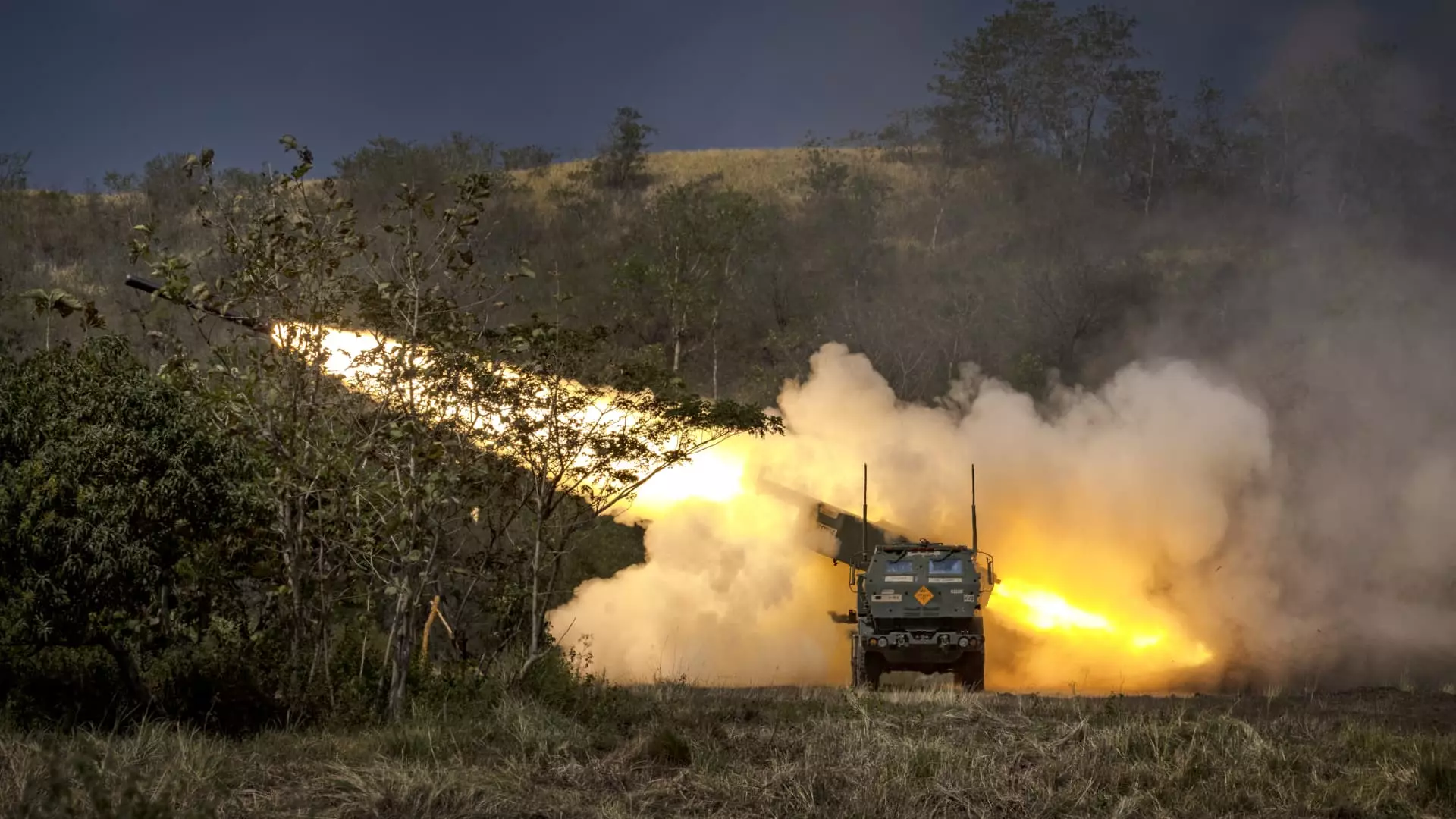The geopolitical dynamics in Southeast Asia are rapidly evolving, particularly with the presence of the United States’ mid-range missile system, the Typhon. Despite mounting pressure from China, the U.S. has made it clear that it has no immediate intentions of withdrawing the system from the Philippines. Instead, the Typhon is under evaluation for its operational utility in guarding regional interests amid rising tensions, particularly concerning Taiwan and the contested waters of the South China Sea. This article will delve into the implications of this military presence, the reactions from various stakeholders, and the strategic intentions behind these maneuvers.
The deployment of the Typhon system in the Philippines marks a significant step in U.S. military strategy in Asia. Housed on the northern island of Luzon, just a short distance from Taiwan, the missile system is pivotal in extending American military reach in the region. Capable of launching cruise missiles with a range of over 1,600 kilometers, the Typhon stands not only as a threat to potential aggressors like China but also as a reassurance to U.S. allies in the Indo-Pacific region.
The Philippine disposition towards the U.S. and its military apparatus is characterized by a commitment to deterrence against Chinese expansion in the South China Sea. Given recent maritime confrontations between the Philippines and China, the operational capacity of the Typhon system serves as a deterrent, making its permanence increasingly significant in the eyes of Filipino officials. This strategic positioning reflects a broader U.S. objective to maintain a military presence that can counterbalance Chinese influence, particularly in light of China’s aggressive military posturing.
China’s response to the Typhon deployment has been predictably hostile, with accusations that the U.S. is instigating an arms race in the region. The Chinese government has communicated its concerns through statements that emphasize the security risks posed by American military installations near its borders. This rhetoric is part of a broader narrative aimed at framing the U.S. as an aggressive force undermining regional stability.
Furthermore, Russian leaders have expressed similar concerns, viewing the situation as a justification for re-engaging in the production of nuclear-capable intermediate and shorter-range missiles. This emerging alliance between China and Russia in response to U.S. military activities highlights the potential for escalating tensions, with the risk of miscalculations leading to broader conflicts.
The interplay of these geopolitical forces reflects the global nature of military strategy and the delicate balance the U.S. must maintain to support its allies while mitigating the risks of inflaming already strained relationships.
From the Philippine perspective, decisions surrounding the Typhon’s deployment hinge on national security interests. Military officials, such as Colonel Louie Dema-ala of the Philippine Army, have underscored that the duration of the Typhon’s stay is contingent upon consultations between U.S. authorities and Philippine military leadership. The assertion that Filipino forces are engaging in ongoing training exercises tests the operational legitimacy of the system within a local context.
The Philippine government has strategically opted to maintain close ties with the U.S., showcasing the Typhon as a tool for deterrence against Chinese advances in the South China Sea. According to sources familiar with the situation, this missile system is not merely an artifact of military cooperation but rather an essential element of preparedness, designed for rapid deployment should conflict arise.
Although the office of Philippine President Ferdinand Marcos Jr. has refrained from publicly commenting, the underlying sentiment supports the idea that a sustained U.S. presence—through systems like Typhon—serves a dual purpose: deterring Chinese military actions while bolstering Philippine defense capabilities.
As the U.S. continues to enhance its military capabilities in the Indo-Pacific, the presence of the Typhon system represents a significant facet of ongoing strategic maneuvering in the region. With plans to procure thousands of new missiles such as the SM-6 and Tomahawk, the U.S. appears committed to restoring military balance against China’s advancements.
However, the implications of this military posturing are complex. While it may serve to uphold U.S. interests and ensure regional allies feel secure, the heightened military presence could also ignite further retaliatory measures from China, leading to a delicate and precarious situation. Issues of sovereignty, territorial claims, and national security may clash more intensely in the coming months, demanding keen diplomatic navigation.
As the geopolitical landscape in Southeast Asia evolves, the fate of the Typhon system in the Philippines serves as a microcosm of a larger struggle for influence and stability in an increasingly competitive world. The balancing act of deterrence and diplomacy will remain critical as regional actors navigate the pressures of an arms race and the imperatives of alliances.

Leave a Reply